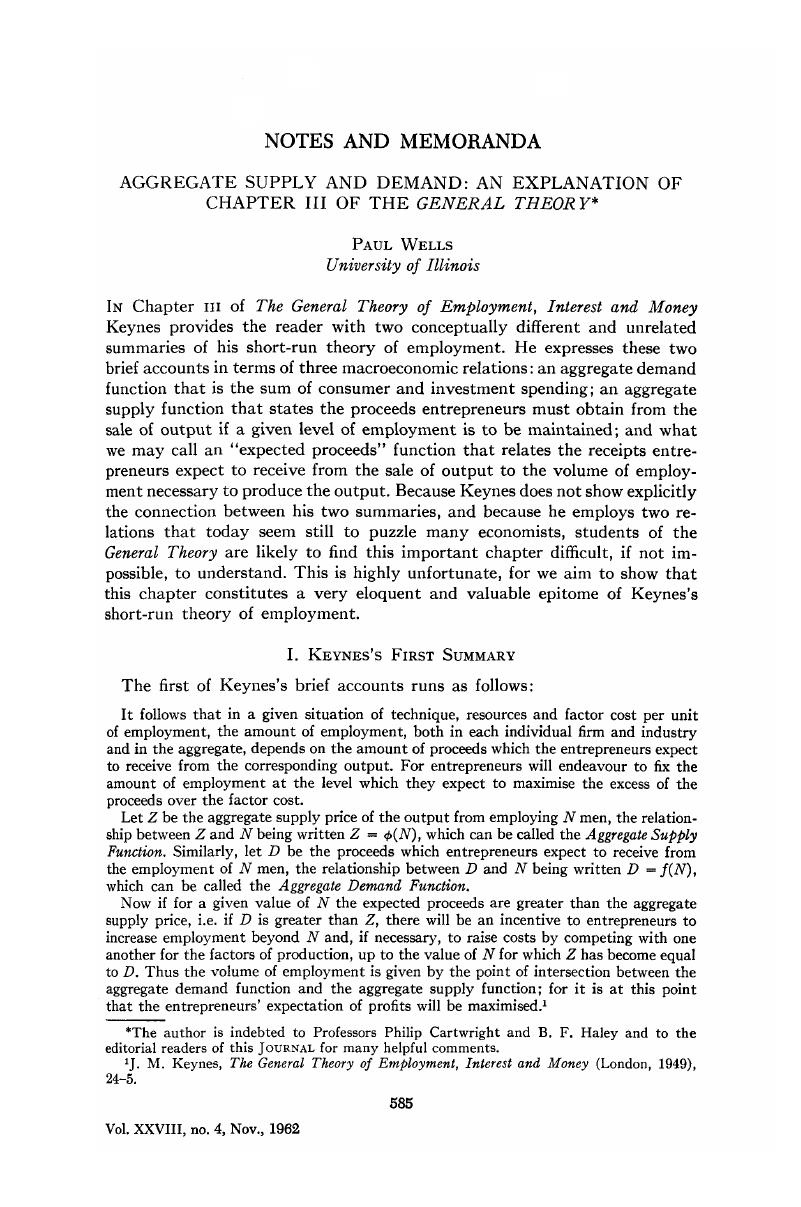Article contents
Aggregate Supply and Demand: An Explanation of Chapter III of The General Theory*
Published online by Cambridge University Press: 07 November 2014
Abstract

- Type
- Notes and Memoranda
- Information
- Canadian Journal of Economics and Political Science/Revue canadienne de economiques et science politique , Volume 28 , Issue 4 , November 1962 , pp. 585 - 590
- Copyright
- Copyright © Canadian Political Science Association 1962
Footnotes
The author is indebted to Professors Philip Cartwright and B. F. Haley and to the editorial readers of this Journal for many helpful comments.
References
1 Keynes, J. M., The General Theory of Employment, Interest and Money (London, 1949), 24–5.Google Scholar
2 It should be noted that the above assumptions are mine and not Keynes's.
3
The assumptions made above that X′ > 0, X″ < 0, and X′″ = 0 guarantee that ![]() decreases as N increases. The proof is as follows:
decreases as N increases. The proof is as follows: ![]() . Thus dZ/dN = w[1 − XX″/(X′)2]. Hence
. Thus dZ/dN = w[1 − XX″/(X′)2]. Hence ![]() , which inspection shows to be positive.
, which inspection shows to be positive.
4 General Theory, 28–9.
5 Ibid., pp. 280–91.
6 Patinkin, D., Money, Interest, and Prices (Evanston, 1956), 222, 237, and 251 Google Scholar; also “Involuntary Unemployment and the Keynesian Supply Function,” Economic Journal, LIX, 360–83.Google Scholar
7 Additional support for this conclusion is to be found in chapters xx and xxi of the General Theory, and in Neisser, H., “Keynes's Aggregate Supply Function: Further Comments,” Economic Journal, LXXI, 850–2.Google Scholar
- 13
- Cited by




